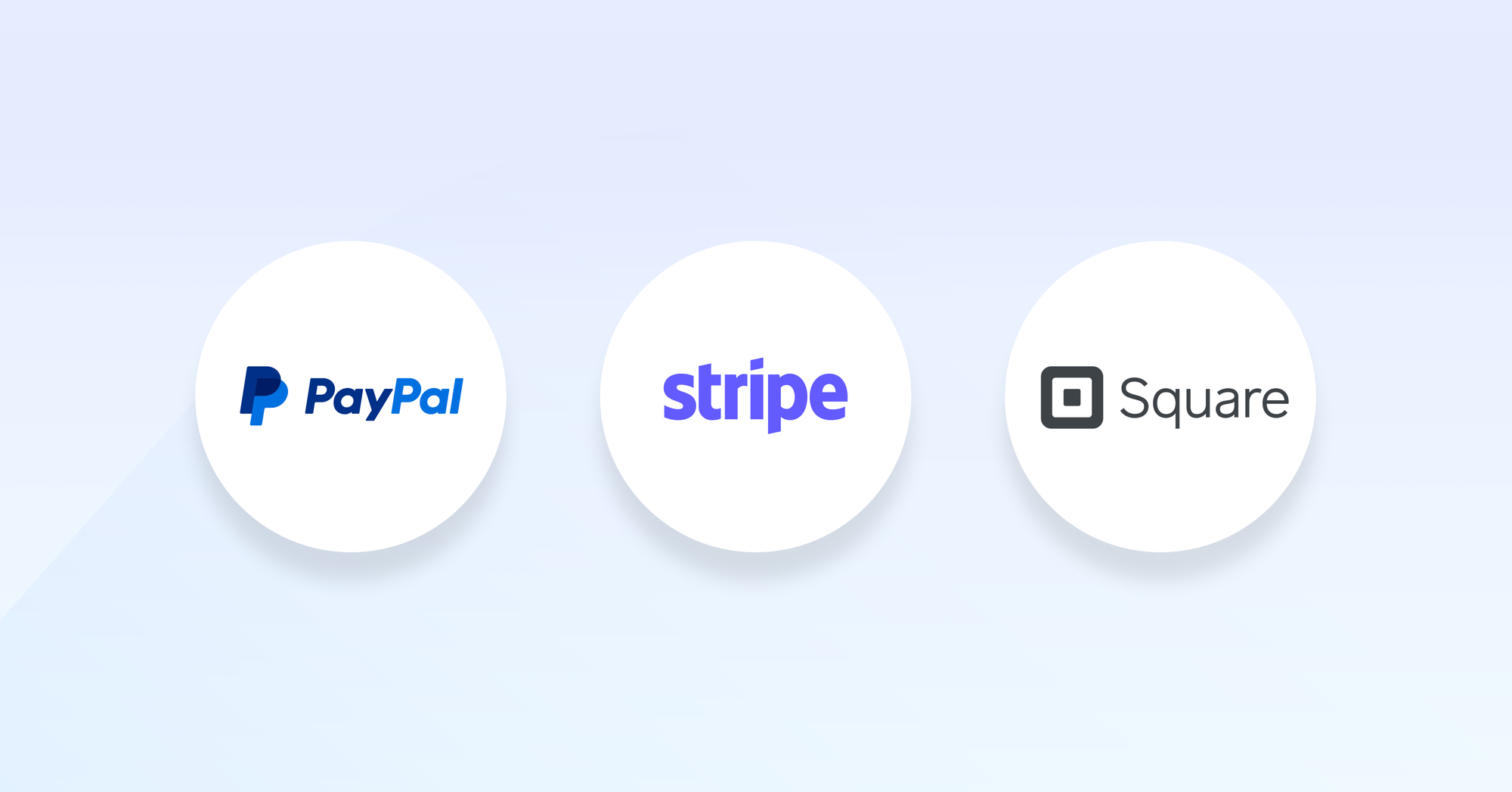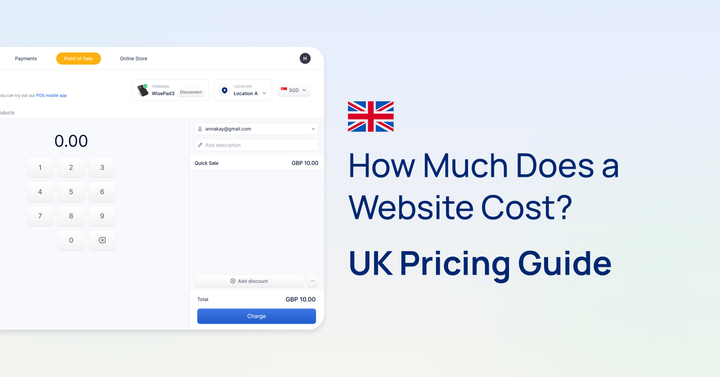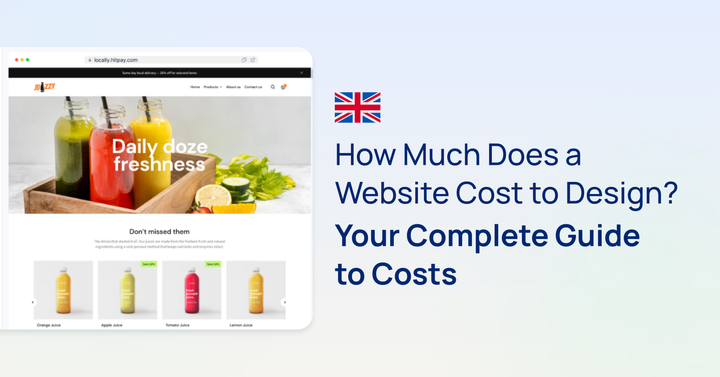How to Accept Payments Online: Integrate a Payment Gateway for Your Website
Learn how to set up online payments by integrating a payment gateway into your website. This guide covers choosing the right website builder, selecting a suitable payment gateway, and ensuring secure transactions to enhance customer trust and boost sales.

Creating a website that enables smooth and secure payments is crucial for any business looking to expand its online presence. At the heart of this process is selecting the right website builder and integrating a payment gateway.
Choosing the right website builder is the first step. It should offer flexibility, ease of use, and the ability to seamlessly incorporate payment options. Once you've built a site that meets your needs, integrating a payment gateway like HitPay can simplify transactions, increase customer trust, and improve your overall sales performance.
In this article, we’ll walk you through how to select the best website builder for your business, set up a secure payment gateway, and ensure your site is ready to accept online payments efficiently. Whether you're just starting or looking to enhance your current site, this guide will help you make informed decisions to support your growth.
Key Takeaways
- Integrating a payment gateway is crucial for secure online transactions.
- Understanding how to set up payment on your website enhances customer trust.
- Seamless payment processes can improve conversion rates.
- Choosing the right online payment system is vital for future business growth.
Why Accepting Payments Online is Essential for Your Business

Accepting online payments has become essential for businesses to meet the needs of today’s tech-savvy shoppers who prefer the convenience of shopping from home. Offering digital payment options does more than just boost revenue; it enhances customer satisfaction and streamlines your operations.
One of the biggest advantages of accepting digital payments is the ability to reach a wider audience. By offering online payment methods, you can attract customers from around the globe. With nearly 70% of shoppers now preferring digital payments, not providing these options could mean losing out on valuable sales opportunities.
Additionally, 42% of shoppers abandon their carts if they can't use their preferred payment method. This highlights the importance of choosing the right website builder which can offer multiple payment options to reduce cart abandonment and increase conversion rates. By implementing an online payment system, you make your business more efficient and accessible, ultimately expanding your customer base and improving your bottom line.
What You Need to Set Up Payments on Your Website
To set up payments on your website, there are several crucial steps to ensure a smooth and secure process. First, you'll need to choose the right payment gateway that suits your business needs.
It’s also important to understand the role of payment processors and the benefits of having a merchant account. Knowing the key features to look for in a payment solution will help you make informed decisions that enhance both security and customer experience on your website.
Choosing the Right Payment Gateway for Your Website
Selecting the right payment gateway for your website is essential for providing seamless online payments. Evaluate different gateways based on the types of payments they accept, their transaction fees, security features, and ease of integration with your website.
Popular options such as HitPay offer various features tailored to different business models—whether you're running a small shop or a large e-commerce platform.
Key Features to Look for in a Payment Solution
When selecting a payment solution, prioritise features that enhance security, efficiency, and customer satisfaction. Key features to consider include:
- Robust Security Measures: With a 72% increase in data breaches since 2021, choosing a payment solution with strong security is more important than ever. Look for solutions that offer advanced security protocols, such as PCI DSS (Payment Card Industry Data Security Standard) compliance, to protect customer data and safeguard your business from potential threats.
- Transaction Management Tools: Ensure the solution offers tools for tracking transactions, generating reports, and handling refunds or chargebacks.
- Fast Payment Processing: Choose a solution that provides quick transaction speeds to minimise waiting times and enhance the customer experience.
- Reliable Customer Support: Opt for a provider that offers strong customer support to assist with any payment-related issues or technical difficulties.
A strong payment solution should protect against fraud, be user-friendly for customers, and offer comprehensive tools for managing sales and financial data effectively.
How to Set Up a Payment Gateway on Your Website: Step-by-Step Guide

Implementing a payment gateway is essential for online businesses to process transactions efficiently. Whether you are using an e-commerce platform or a custom-built website, a secure payment gateway enhances customer trust and improves the overall shopping experience.
Setting Up Payment Options with an E-Commerce Platform
E-commerce platforms simplify the process of adding payment options to your online store. To integrate a payment gateway seamlessly, follow these steps:
- Choose a payment gateway compatible with your platform.
- Navigate to your ecommerce platform's dashboard and locate the settings.
- Find the section for payment options or payment processor settings.
- Follow the platform's instructions to connect and configure your chosen payment gateway.
Integrating Payment Gateways into a Custom Website
For custom websites, integrating payment gateways requires a more hands-on, complex approach:
- Review the documentation provided by your selected payment gateway.
- Implement the payment gateway by adding the necessary code to your website.
- Use APIs to enable seamless integration and ensure that the payment process is user-friendly.
How to Enable Secure Payment Processing (SSL, PCI Compliance)
Securing payment transactions is critical for online businesses, especially since eCommerce companies are estimated to lose $48 billion to fraud each year. To ensure secure payment processing:
- Install SSL certificates to encrypt data during transactions and protect sensitive customer information.
- Ensure PCI compliance by adhering to the Payment Card Industry Data Security Standards, creating a secure environment for handling customer payments.
Implementing these security measures is essential for building customer trust and minimising the risk of data breaches and fraudulent activities.
Popular Payment Gateways for UK Businesses: A Comparison

Choosing the right payment gateway is key for your business. This comparison looks at top UK options like HitPay, PayPal, Stripe, and Square. Each has special features for different businesses. Knowing these can help you pick the best payment gateway.
When selecting a payment gateway, consider factors like fees, customer experience, and ease of integration to make an informed choice. Evaluating these elements will help you find the ideal payment solution for your business needs.
Best Practices for Managing Payments on Your Website
Effectively managing payments on your website is crucial for boosting your business's performance. A smooth checkout process, secure transactions, and efficient dispute handling not only enhance customer satisfaction but also build trust in your brand.
How to Optimise Your Checkout Process for Conversions
To increase conversions, your checkout process should be as straightforward and user-friendly as possible. With 1 out of every 5 shoppers abandoning their cart due to a lengthy or complicated checkout process, streamlining this experience is crucial. Consider these strategies:
- Minimise Steps: Reduce the number of steps needed to complete a purchase to make it quick and easy, decreasing the likelihood of cart abandonment.
- Guest Checkout: Offer a guest checkout option to avoid forcing customers to create an account, which can be a barrier to completing a purchase.
- User-Friendly Design: Implement a clean and intuitive design that guides customers through the process without confusion.
- Progress Indicators: Use a progress bar to show customers how far they are from completing their purchase, reducing uncertainty and encouraging them to finish the transaction.
These techniques make the buying process more convenient, helping to retain customers and increase sales.
Handling Payment Disputes and Refunds
An efficient approach to handling payment disputes and refunds is essential for maintaining customer loyalty. Follow these guidelines:
- Quick Resolution: Address customer issues promptly to minimise frustration and enhance satisfaction.
- Transparent Dispute Policy: Clearly communicate your dispute resolution policy on your website to set customer expectations.
- Maintain Detailed Records: Keep comprehensive records of all transactions and communications to support dispute resolution efforts.
- Process Refunds Efficiently: Ensure refunds are processed quickly to reassure customers and maintain their trust.
By adopting these practices, you will enhance your ability to resolve disputes effectively, improving the overall customer experience and fostering long-term loyalty.
How to Set Up Recurring Payments and Subscriptions on Your Website

Recurring payment models are crucial for businesses seeking consistent revenue streams. By implementing subscription billing, you can secure a predictable cash flow, allowing for more strategic growth planning.
To make this process seamless, it's important to have a payment gateway capable of handling automated billing and recurring payments efficiently.
Subscription-Based Business Models and Billing Options
Opting for a subscription-based model means providing flexible billing options that cater to your customers’ needs and preferences. You could offer monthly, quarterly, or annual subscriptions, depending on your product type and target audience.
Key platforms that support these billing options include:
- HitPay: An all-in-one payment platform designed for small and medium businesses, HitPay simplifies subscription management with its easy-to-use tools for automated billing, invoicing, and customer management. It supports multiple payment methods and currencies, ensuring flexibility and convenience for your customers.
- Stripe: Offers robust tools for managing subscription payments, including custom billing intervals, automatic invoicing, and support for various currencies.
- PayPal: Known for its global reach, PayPal supports recurring billing with options for different subscription cycles and flexible payment methods.
- Square: Provides an easy-to-use interface for subscription management, with features like automatic invoicing, customer management, and seamless integration with e-commerce sites.
These platforms simplify subscription automation and integrate well with your website, making it easier to handle invoicing and recurring payments while maintaining financial control and efficiency.
Automating Recurring Payments and Managing Customer Accounts
Automating recurring payments helps reduce administrative tasks and minimises the risk of missed payments. Automated billing not only reduces the workload involved in sending payment reminders and processing transactions but also enhances the customer experience by allowing them to manage their subscriptions easily.
Here’s what you should think about when automating payments:
Adding these features makes managing subscriptions easier and keeps customers coming back. This leads to more loyalty and more money from recurring sales.
Get Started With HitPay's Secure Website Builder

Setting up payments on your website is crucial for success in today’s digital market. A seamless payment process not only facilitates transactions but also fosters trust with your customers. Understanding how to effectively implement payment gateways and processors enables you to manage online payments efficiently.
Implementing a robust payment strategy enhances customer satisfaction, encouraging repeat business. Prioritising secure payment practices, such as SSL certificates and PCI compliance, protects your business and customers from fraud, boosting your credibility and reputation online.
By investing in effective payment solutions, you position your business for growth and adaptability. As customer preferences evolve, a streamlined payment experience meets their current needs while preparing your business for the future of e-commerce.
Try HitPay’s Online Website Builder for free today!
If you're a customer who has questions about paying with HitPay, feel free to contact us on our website.
FAQs
Why do I need to integrate a payment gateway into my website?
Adding a payment gateway makes online transactions secure and efficient. It lets you accept many payment methods like credit cards and digital wallets. This builds trust with customers and boosts sales.
What security measures do I need to implement for online payments?
Use strong security steps, like SSL certificates to protect customer data, and follow PCI DSS to keep sensitive info safe.
Can I integrate a payment gateway into a custom-built website?
Yes, you can add a payment gateway to a custom site by manually adding code or using APIs from payment providers. Most gateways provide detailed help for integration.
What should I do if a payment dispute arises with a customer?
Have a clear policy for disputes and refunds. Answer customer concerns quickly, be open, and have a plan to solve problems well. This boosts customer happiness.
How can I set up recurring payments for subscription-based services?
For recurring payments, pick a gateway with automated billing. Tools like Stripe make managing subscriptions and invoices easy, helping you collect payments automatically.



